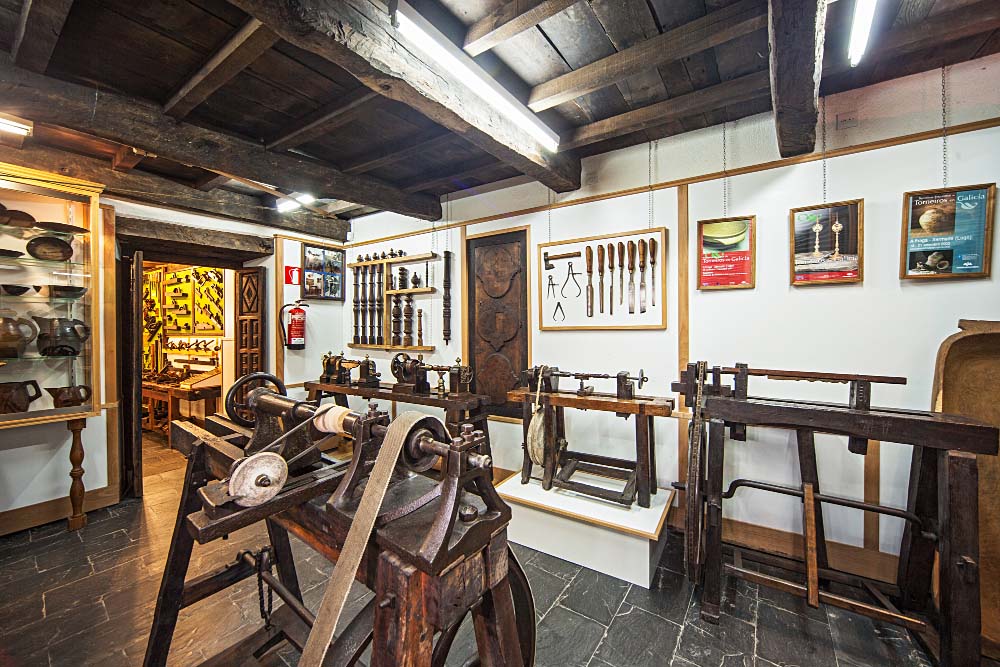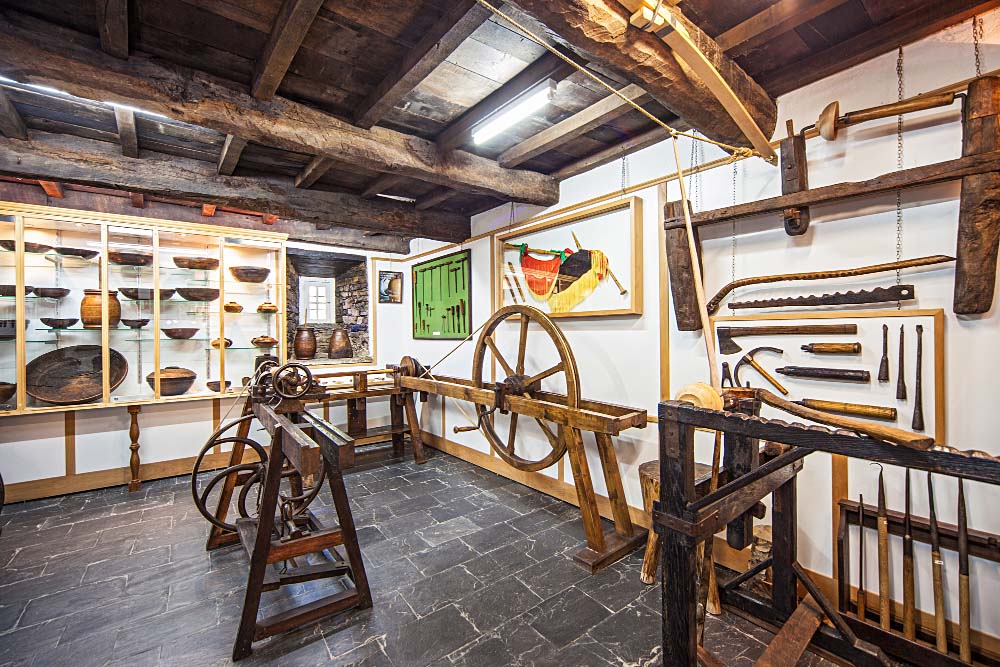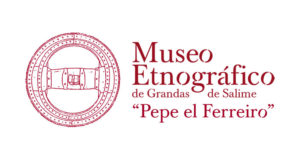The crockery in the peasant houses was almost entirely made of turned wood. In the 16th century, Eugenio de Salazar wrote about the inhabitants of Tormaleo (Ibias): “They are a very sharp people, who eat and drink on wooden plates and bowls because they do not eat or drink on Talavera plates or Venetian glass, which they say is dirty and made of clay”. Closer to us, the inventories of goods made in the 19th century mention many wooden containers in the houses and few ceramic ones. In the area where the Museum is located, there was no pottery centre and the few pieces of clay that were used came from Ḷḷamas del Mouru (Cangas del Narcea), Castile and, above all, Galicia.
The lathe used for woodworking was a treadle and half-turn one. This is a simple machine that allowed the torneiros from Estierna and El Vau (Ibias) to move temporarily to León, Castile and Extremadura to make pottery for the houses. The wood used was castañeiro (chestnut), bidueira (birch) and salgueira (willow).
The shapes produced were varied and covered different needs of rural life. For eating and other domestic uses there were concas (bowls), pratos (plates), bacicas (bowls), trilladeiras or riladeiras for cutting meat, salt containers and cimbreiras (boxes) for carrying food to the hills. For the slaughter there were arameños, maseiras or large troughs in which the meat was laced and marinated. To make butter, there were olas or mazadeiras in which the cream was beaten or churned with a parafusa. For the wine, there were funnels for racking, canadas for measuring, cachos for drinking, etc.



